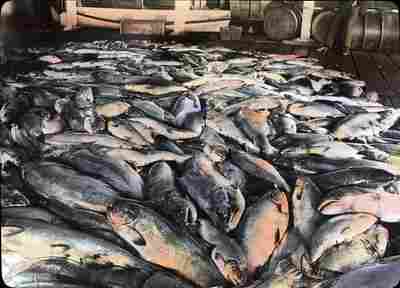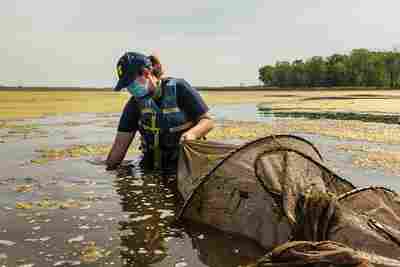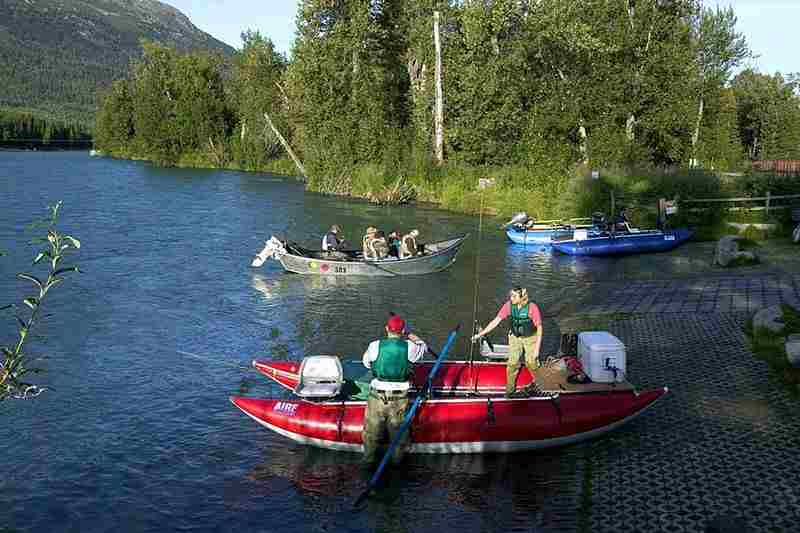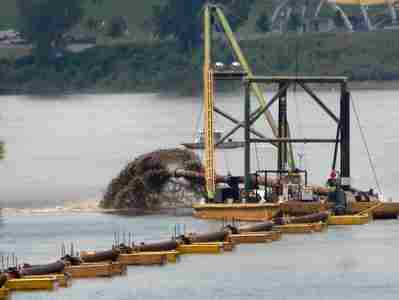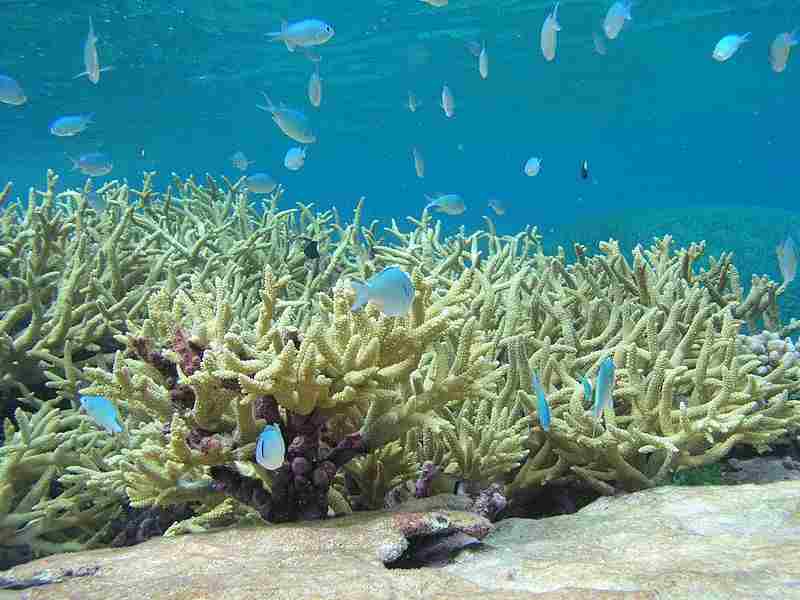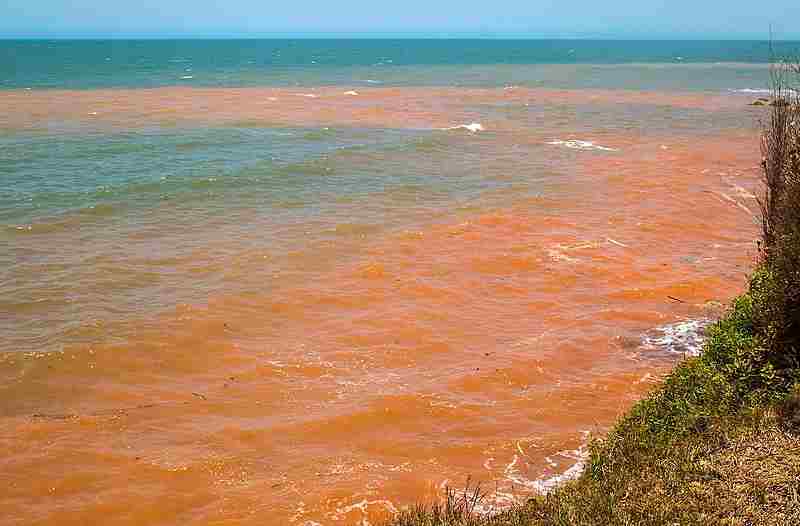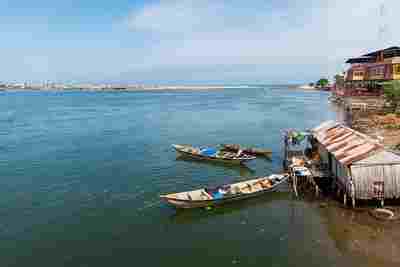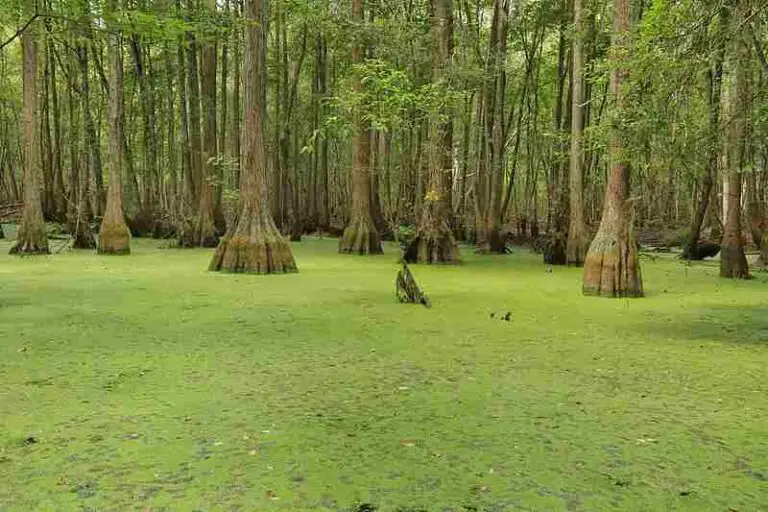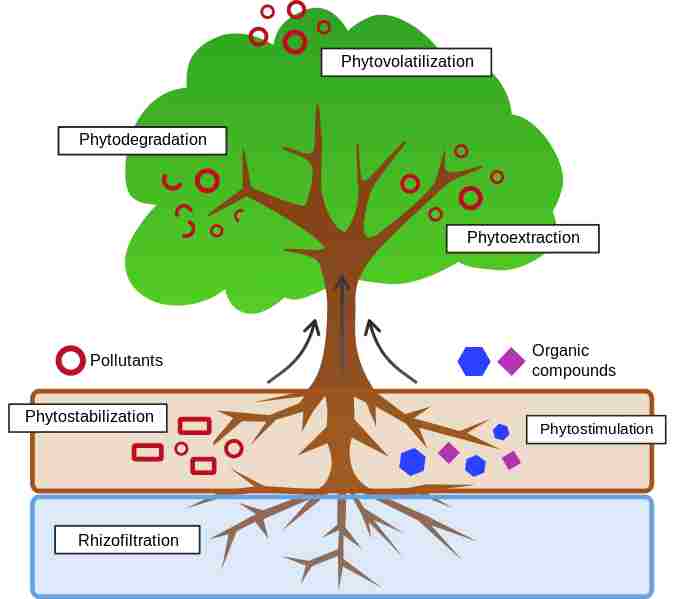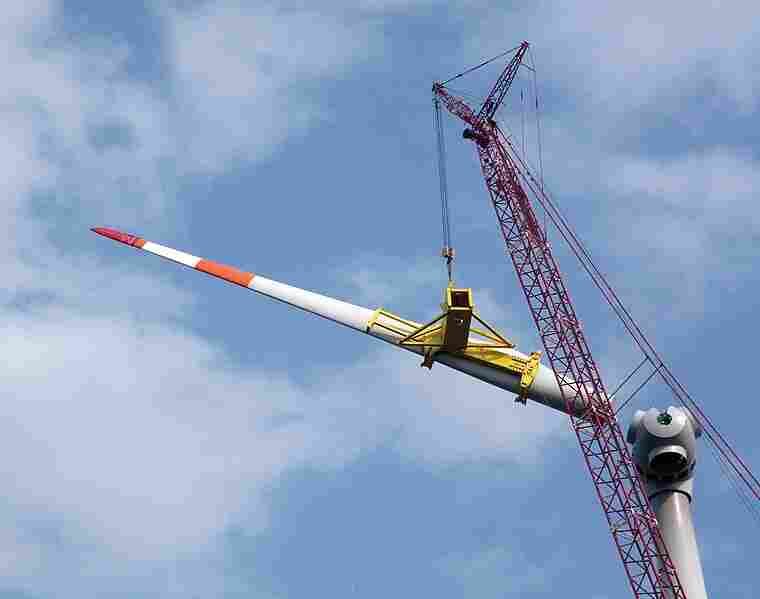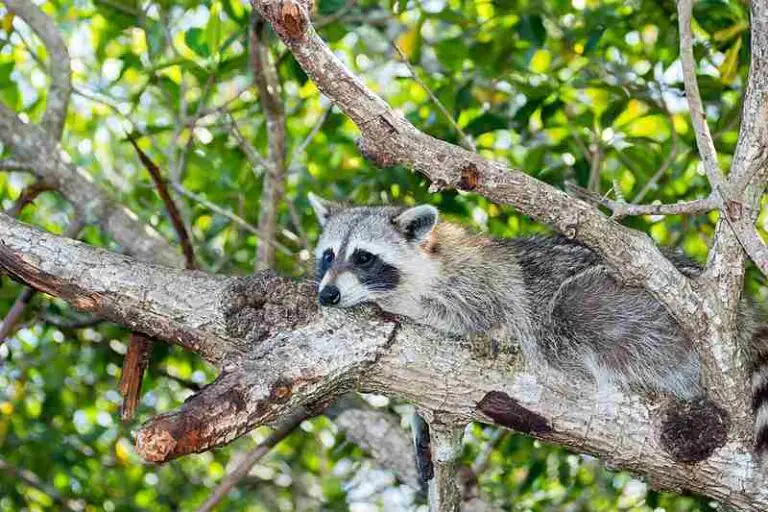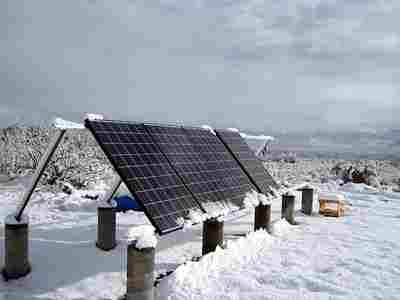Why are Coastal Ecosystems Important? 13 Reasons Discussed
Coastal ecosystems are important for their contributions to food security enhancement, shoreline protection, local economic benefits, carbon storage, tourism value, aquacultural practices, recreational fishing, migratory bird sustenance, aquatic biodiversity support, archeological studies; cultural symbolism, scientific research, and land-sea connectivity. This article answers the question; why are coastal ecosystems important? with various reasons, as follows;
1). Food Security Enhancement
Coastal ecosystems are important for their role in food security enhancement. Some aspects and implications of food security enhancement by coastal ecosystems include; fisheries and aquaculture, nursery grounds for aquatic organisms, biodiversity contributions, economic opportunities; and carbon sequestration.
Coastal ecosystems, such as estuaries, mangroves, and coral reefs, are critical for sustaining fisheries and aquaculture. They provide a diverse range of seafood, including fish, crustaceans, and mollusks, which are essential protein sources for many coastal communities.
Many coastal ecosystems, like mangroves and seagrass beds, serve as crucial nursery grounds for fish and invertebrates. These habitats support the early life stages of commercially valuable species, helping to maintain fish stocks and support local livelihoods.
Coastal ecosystems contribute to biodiversity, ensuring the resilience of food systems by providing a variety of species. This diversity can be a buffer against overfishing and environmental changes.
Coastal ecosystems create economic opportunities for fishing communities, helping to alleviate poverty and enhance income stability.
Mangroves and seagrass meadows store carbon in their vegetation and sediments, aiding in climate change mitigation, which, in turn, supports long-term food security.

Reasons why coastal ecosystems are important, within the context of food security include their roles as primary food sources, nutrient cycling systems, buffers of ecologic resilience, and sources of economic value.
Coastal ecosystems are primary sources of food for millions of people worldwide. They contribute significantly to global food security, especially in coastal regions.
These ecosystems play a vital role in nutrient cycling, improving water quality and enhancing the productivity of adjacent marine environments, which supports fisheries and aquaculture.
The biodiversity and ecological services provided by coastal ecosystems make food systems more resilient to environmental changes, such as climate impacts and overfishing.
Coastal ecosystems are integral to the economies of many coastal communities, offering sustainable livelihoods and income.
Protecting and conserving coastal ecosystems is not only essential for food security but also for safeguarding the overall health of the planet and the well-being of communities that depend on them.
Enhancing food security through the sustainable management and protection of coastal ecosystems is crucial for meeting the nutritional needs of coastal populations, preserving biodiversity, and supporting the long-term well-being of coastal communities.
2). Shoreline Protection
Shoreline protection is another function that highlights the importance of coastal ecosystems. Some aspects and implications of shoreline protection by coastal ecosystems include; natural barrier effects, erosion control and sediment stabilization, wave energy dissipation, and contribution to overall coastal resilience.
Coastal ecosystems, such as mangrove swamps, salt marshes, and coral reefs, act as natural barriers, reducing the impact of storm surges, coastal erosion, and tsunamis. They protect coastlines, infrastructure, and communities from damage and flooding.
Coastal vegetation and hard structures like rocky shores help stabilize sediments and reduce erosion, preventing the loss of valuable coastal land.
Coral reefs and submerged vegetation break waves and reduce wave energy, safeguarding coastlines and preventing erosion.
Lastly, coastal ecosystems contribute to the overall resilience of coastal communities by absorbing the brunt of climate change impacts, such as sea-level rise and extreme weather events.
Reasons why shoreline protection by coastal ecosystems is important, include the provision of protection for infrastructure, preservation of economic value, support for biodiversity, and provision of ecosystem services.
Coastal ecosystems provide critical protection for human safety and infrastructure, including homes, businesses, and essential coastal infrastructure.
Protecting shorelines through these ecosystems preserves the economic value of coastal regions, including tourism, fishing, and agriculture.
These ecosystems support rich biodiversity, and their conservation ensures the preservation of unique and often fragile coastal habitats.
Coastal ecosystems, by acting as carbon sinks, help mitigate climate change, which, in turn, reduces the risk of intensified weather events and sea-level rise.
Beyond protection, these ecosystems offer valuable services like water filtration, recreational opportunities, and carbon sequestration.
Coastal ecosystems are vital for safeguarding coastal areas and communities, making them important not only for environmental conservation but also for human safety, economic stability, and overall climate resilience. Their role in shoreline protection underscores their significance for sustainable coastal development.
3). Local Economic Benefits
Discussions in earlier sections of this article have already implied that coastal ecosystems have economic value.
The various aspects and implications, of the local economic benefits provided by coastal ecosystems, include; tourism and recreation, support of fisheries, cultural and heritage tourist attractions, opportunities for education, research, and conservation. These are outlined as follows;
Coastal ecosystems, including beaches, coral reefs, and mangroves, attract tourists and outdoor enthusiasts, boosting local economies through revenue from accommodations, restaurants, and recreational activities.
These ecosystems provide critical support for fisheries and aquaculture, offering a source of income for coastal communities and a staple food source.
Coastal areas with unique ecosystems often draw cultural and heritage tourists, promoting local art, traditions, and products.
Coastal ecosystems offer opportunities for eco-tourism and educational programs, which contribute to local businesses and enhance community livelihoods.
Coastal ecosystems foster scientific research, leading to knowledge development and employment opportunities in fields like marine biology, environmental science, and conservation.

Some factors highlighting the local economic importance of coastal ecosystems include; provision of jobs and income, diversification of local economies, preservation of indigenous resources, promotion of education and skill-acquisition, and contribution to sustainable economic growth.
Coastal ecosystems directly support local livelihoods, providing jobs, income, and business opportunities, particularly in developing coastal regions.
Diversification of local economies through tourism and fisheries reduces vulnerability to economic downturns in other sectors.
Coastal ecosystems can help preserve indigenous cultures and heritage, enhancing cultural and heritage tourism opportunities.
Research and conservation activities related to coastal ecosystems promote education, skills, and local expertise, benefiting the community.
Coastal ecosystems contribute to sustainable economic growth while promoting environmental conservation and responsible practices.
Coastal ecosystems play a pivotal role in enhancing local economies, making them important for promoting prosperity, employment, and overall community well-being. Their positive economic impacts underscore their significance for coastal regions.
4). Carbon Storage
Carbon storage is an important natural function of coastal ecosystems.
Some aspects and implications of carbon storage by coast ecosystems are; atmospheric carbon capture, mitigation of greenhouse gases and climate change, and enhancement of ecologic resilience. They are elaborated in the outline below;
Coastal ecosystems, such as mangrove swamps, seagrass meadows, and salt marshes, capture and store significant amounts of carbon from the atmosphere in their vegetation and sediment.
Carbon storage in coastal ecosystems helps mitigate climate change by reducing the concentration of greenhouse gases in the atmosphere, particularly carbon dioxide (CO2).
Carbon sequestration enhances the resilience of coastal ecosystems and communities by contributing to the regulation of ocean acidity and temperature.
The concept of "blue carbon" emphasizes the importance of coastal ecosystems in carbon storage, recognizing their role in mitigating climate change.
Reasons why carbon storage by coastal ecosystems is an important function include; contribution to climatic sustainability, enhancement of ecologic resilience, maintenance of ocean health, preservation of biodiversity, and contribution to sustainable coastal development.
Carbon storage in coastal ecosystems aids in mitigating the impacts of climate change, making them essential in global efforts to reduce greenhouse gas emissions.
The sequestration of carbon enhances the resilience of coastal ecosystems to environmental stressors, including rising sea levels and temperature changes.
By trapping carbon in their vegetation and sediments, these ecosystems help maintain ocean health and mitigate ocean acidification, which benefits marine life.
The conservation of coastal ecosystems for carbon storage also preserves biodiversity, maintaining the ecological balance and food web.
Recognizing the carbon storage value of coastal ecosystems reinforces the importance of their conservation and sustainable management, contributing to sustainable coastal development.
Coastal ecosystems are effective in capturing and storing carbon, making them indispensable in the fight against climate change. Their significance in carbon sequestration underlines the importance of preserving and protecting these vital ecosystems.
5). Tourism Value
As valuable sits of tourist attraction, coastal ecosystems can be considered important within both economic and social contexts.
The tourism value of coastal ecosystems can be discussed with regards to concepts like; scenic beauty, opportunities for recreational activity, revenue generation, promotion of cultural heritage, eco-tourism and education.
Coastal ecosystems, including sandy beaches, coral reefs, and mangrove forests, offer scenic beauty and natural attractions that draw tourists.
They provide opportunities for recreational activities such as swimming, snorkeling, diving, birdwatching, and water sports, enhancing tourism appeal.
Tourism generated by coastal ecosystems brings revenue to local economies through accommodations, restaurants, and tour services.

Many coastal areas with unique ecosystems attract cultural and heritage tourists, promoting local art, traditions, and products.
Eco-tourism and educational programs centered around coastal ecosystems not only support local businesses but also foster environmental awareness.
Some factors that emphasize the importance of tourist activities around coastal areas include; economic benefit, sustainable development, cultural preservation, environmental awareness, promotion of knowledge, skills and expertise.
Tourism is a major source of income for many coastal communities, offering jobs and business opportunities, particularly in developing regions.
Tourism revenue contributes to economic growth, diversifies local economies, and promotes sustainable development practices.
Coastal ecosystems can help preserve indigenous cultures and heritage, enhancing cultural and heritage tourism opportunities.
Tourism centered around coastal ecosystems raises environmental awareness and supports conservation efforts.
Research, education, and training related to coastal ecosystems promote knowledge, skills, and expertise, benefiting the community.
Coastal ecosystems are integral to the tourism industry, making them important for economic prosperity, cultural preservation, environmental education, and sustainable development in coastal regions.
6). Aquacultural Use(s)
The relevance of coastal ecosystems to aquaculture has been highlighted already within other discussions in this article.
Various aspects of aquacultural applications of coastal ecosystems include; support for commercial and subsistence fisheries, provision of essential nursery grounds, enhancement of aquatic biodiversity, employment generation, and promotion of resource management. More detail is provided as follows;
Coastal ecosystems, including estuaries and mangroves, support commercial and subsistence fisheries, providing a source of seafood and income.
Some ecosystems, like mangroves and seagrass meadows, serve as essential nursery grounds for fish and invertebrates, ensuring the sustainability of fish stocks.
Coastal ecosystems enhance biodiversity and contribute to the overall health and productivity of marine environments, sustaining aquacultural activities.
The aquaculture sector generates employment and economic opportunities for coastal communities, improving livelihoods and food security.
The aquacultural use of coastal ecosystems promotes responsible resource management and sustainable fishing practices.
Aquacultural use of coastal ecosystems is important because it contributes to food security, economic stability, biodiversity conservation, environment stewardship, and sustainable development.
Coastal ecosystems provide a vital source of seafood, contributing to global food security and supplying protein to millions of people.
Fisheries and aquaculture activities in coastal areas offer economic stability, employment, and income for local communities.
The health and biodiversity of coastal ecosystems are essential for sustaining fisheries and aquaculture in the long term.
Protecting and conserving these ecosystems ensures the sustainability of aquacultural practices while maintaining the ecological balance.
Lastly, recognizing the importance of coastal ecosystems in aquaculture highlights the need for responsible resource management and sustainable coastal development.
Coastal ecosystems are involved in supporting aquaculture and fisheries, making them important for food security, economic stability, and responsible resource management in coastal regions.
7). Recreational Fishing
The practice of recreational fishing is another factor which makes coastal ecosystems important.
Some aspects and implications of recreational fishing in coastal ecosystems include; contribution to tourism and local economic growth, opportunities for local recreation generation of revenue, fostering conservation efforts, as well as facilitation of education/awareness.
Coastal ecosystems, including shorelines, coral reefs, and estuaries, draw recreational anglers, contributing to tourism and local economies.
Coastal areas offer opportunities for local residents to engage in recreational fishing, promoting outdoor activities and well-being.
Recreational fishing generates revenue for coastal communities through equipment sales, charter services, and related businesses.
The recreational fishing community often supports conservation and sustainable fishing practices to ensure the longevity of fish stocks and coastal ecosystems.
Recreational fishing provides a platform for environmental education and raising awareness about coastal ecosystems and their conservation.
The importance of recreational fishing in coastal ecosystems range from economic contribution to community well-being, sustainable practices, conservation support, and cultural importance.
Recreational fishing enhances local economies, particularly in coastal regions, through tourism and the sale of fishing-related products and services.
Coastal ecosystems provide opportunities for outdoor recreation and stress relief, benefiting the physical and mental health of local communities.
The recreational fishing community often advocates for responsible resource management and sustainable fishing practices, supporting the long-term health of coastal ecosystems.
The engagement of recreational anglers in conservation efforts contributes to the preservation of fish stocks and coastal biodiversity.
Fishing has cultural significance in many coastal communities, and its preservation contributes to the cultural heritage of these regions.
Coastal ecosystems are useful for recreational fishing, which also implies that they are important for economic contribution, community well-being, conservation, and cultural significance in coastal regions.
8). Migratory Bird Support
An important role of coastal ecosystems involves the sustenance of migratory birds, by serving as critical stopover sites, nesting and breeding grounds, and tools for biodiversity enhancement.
Coastal ecosystems, including mudflats, marshes, and shorelines, serve as vital stopover sites for migratory birds during their long journeys, providing a place to rest and refuel.
Many coastal ecosystems offer nesting and breeding grounds for migratory birds, ensuring the survival of their species.
Migratory birds contribute to biodiversity by supporting a complex food web of species interactions in coastal ecosystems.
Bird-related activities like birdwatching and tourism bring economic and cultural value to coastal communities.
The presence and behavior of migratory birds in coastal areas can serve as indicators of environmental health and changes.
Migratory bird support makes coastal ecosystems important by contributing to the conservation of species, generation of tourism revenue, enhancement of ecological stability, and provision of research opportunities.
Coastal ecosystems are essential for the survival of many migratory bird species, contributing to biodiversity conservation.
Birdwatching and related activities generate tourism revenue and income for local economies in coastal regions.
The presence and behavior of migratory birds can signal the ecological health and stability of coastal ecosystems.
Migratory birds often hold cultural significance in many coastal communities, adding to the cultural heritage of these regions.
Coastal ecosystems provide valuable research opportunities for studying bird behavior, populations, and ecological interactions.
9). Sustenance of Aquatic Biodiversity
When discussing aquatic biodiversity sustenance by coastal ecosystems; some important factors to highlight include; habitat diversity, provision of nursery grounds, protection and shelter, food chain support, and ecosystem services.
Coastal ecosystems, including coral reefs, mangroves, and seagrass beds, offer diverse habitats that sustain a wide range of aquatic species.
These ecosystems often serve as critical nursery grounds for fish and invertebrates like filter-feeding mussels, supporting the life cycles of many marine species.
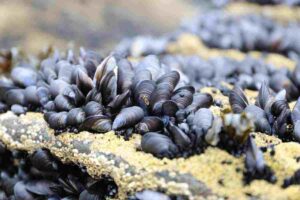
Coastal habitats provide protection and shelter for various aquatic organisms, aiding in their survival and reproduction.
Aquatic biodiversity in coastal ecosystems forms the foundation of food webs, supporting higher trophic levels and fisheries.
The rich biodiversity of coastal ecosystems enhances ecosystem services, such as water filtration, carbon sequestration, and coastal protection.
With respect to aquatic organisms, the importance of coastal ecosystems can be understood in terms of biodiversity conservation, fisheries support, ecosystem resilience enhancement, resource management; and global well-being.
Coastal ecosystems are essential for preserving diverse aquatic species, contributing to global biodiversity and ecological balance.
They provide critical support for fisheries, sustaining fish stocks and the livelihoods of fishing communities.
Coastal ecosystems enhance the resilience of marine environments, making them more adaptable to environmental changes.
Recognizing the importance of these ecosystems underscores the need for responsible resource management and conservation.
The sustenance of aquatic biodiversity in coastal ecosystems has global implications for food security, economic stability, and environmental health.
10). Archeological Value
Their archeological value is a valid pointer to the importance of coastal ecosystems.
This is linked to functions and concepts like preservation of cultural heritage, scientific and historical research, cultural significance, tourism, education, and ecological conservation.
Coastal ecosystems, often with submerged archaeological sites, protect and preserve remnants of past civilizations, artifacts, and historical relics.
These archaeological sites provide valuable opportunities for scientific research and historical exploration, contributing to knowledge and understanding of human history.
Coastal archaeological sites hold cultural and heritage value for indigenous and local communities, connecting them to their historical roots.
The presence of archaeological sites in coastal areas can attract tourists and support educational programs, enhancing local economies and awareness.
Coastal ecosystems contribute to the protection and conservation of underwater cultural heritage, ensuring its preservation for future generations.
The archeological importance of coastal ecosystems can be highlighted based on; protection of cultural heritage, opportunities for research and historical analysis, promotion of cultural understanding, economic benefits, and heritage preservation.
These ecosystems safeguard and protect cultural heritage, archaeological sites, and artifacts, maintaining their historical and cultural significance.
Coastal archaeological sites offer opportunities for scientific research, historical analysis, and the discovery of new knowledge.
They help indigenous and local communities connect with their cultural heritage and promote cultural understanding.
Tourism related to archaeological sites can generate revenue for local economies, supporting tourism and educational activities.
The presence of archaeological value underscores the importance of preserving and protecting coastal ecosystems for their cultural and historical significance.
Generally, coastal ecosystems are significant for the preservation and protection of archaeological sites and cultural heritage, contributing to cultural understanding, historical research, and local economies in coastal regions.
11). Cultural Symbolism
Many coastal ecosystems are culturally symbolical.
This area of importance can be discussed with reference to factors like indigenous value, spiritual and ritual importance, identity and community bonding, art and expression, educational and awareness initiatives.
Coastal ecosystems often hold cultural and symbolic value for indigenous and local communities, representing their heritage, traditions, and connection to the sea.
Many coastal ecosystems are the focus of spiritual and ritual practices, such as ceremonies, offerings, and celebrations, deeply ingrained in local culture.

Coastal ecosystems play a role in shaping community identity, providing a sense of belonging, and reinforcing cultural cohesion.
They inspire artistic expression through literature, music, art, and folklore, further preserving cultural traditions.
The cultural symbolism of coastal ecosystems can be harnessed for educational programs that promote environmental awareness and conservation.
Further elaboration of the cultural importance of coastal ecosystems may include terms like; cultural heritage, community well-being, conservation stewardship, cultural exchange, and promotion of conservative measures.
They are integral to the preservation of cultural heritage, ensuring that traditional values and practices are passed down through generations.
Coastal ecosystems contribute to community well-being, fostering a sense of pride, identity, and unity among local populations.
Recognizing the cultural symbolism of these ecosystems reinforces the importance of their conservation, as the preservation of nature is intertwined with cultural identity.
Cultural symbolism associated with coastal ecosystems can promote cultural exchange, understanding, and appreciation among different communities.
The cultural significance of these ecosystems can serve as a powerful motivator for their protection and sustainable management.
Coastal ecosystems are essential for preserving cultural symbolism, heritage, and identity, which makes them important not only for cultural well-being but also for environmental conservation and the promotion of cultural diversity.
12). Scientific Research Uses
Some of the various aspects and implications of scientific research in coastal ecosystems include; biodiversity studies, climate change research, ecosystem services, marine biology, and environmental monitoring.
Coastal ecosystems support diverse life forms, making them ideal for studying ecological interactions, species diversity, and adaptation.
These ecosystems serve as early indicators of climate change impacts, enabling research on rising sea levels, ocean acidification, and temperature changes.
Coastal ecosystems contribute to the study of ecosystem services, including carbon sequestration, water filtration, and coastal protection.
Coastal areas offer unique environments for marine biology research, helping scientists understand the behavior, physiology, and ecology of marine species.
Also, coastal ecosystems provide data for monitoring environmental changes, which informs conservation and management efforts.
Reasons why coastal ecosystems are important for scientific research include; knowledge advancement, environmental conservation, climate change mitigation, sustainable management, educational and awareness initiatives.
Coastal ecosystems play a pivotal role in advancing scientific knowledge in fields such as marine biology, ecology, and climate science.
Research in these ecosystems informs conservation strategies, helping protect biodiversity and ecosystem services.
Scientific research in coastal ecosystems contributes to climate change mitigation efforts, enhancing understanding of carbon sequestration and climate impacts.
Data from scientific research supports sustainable management practices for coastal ecosystems, ensuring their long-term health.
Research findings can be used for educational programs that raise awareness about the importance of coastal ecosystems and conservation efforts.
13). Land-Sea Connectivity
Land-sea connectivity is an important function of coastal ecosystems. Its aspects and implications include; nutrient exchange, sediment transport, water filtration, wildlife corridors, and erosion control.
Coastal ecosystems facilitate the exchange of nutrients between land and sea, affecting water quality and supporting marine productivity.
They help regulate sediment transport, which can reduce coastal erosion and maintain healthy beach and shoreline environments.
Coastal ecosystems act as natural filters, purifying runoff water and improving water quality before it enters the ocean.
They create vital wildlife corridors, allowing species to move between terrestrial and marine environments, enhancing biodiversity.
Coastal vegetation and natural features aid in controlling coastal erosion and preserving the integrity of coastal landscapes.
The importance of coastal ecosystems for land-sea connectivity can be discussed within contexts such as; ecosystem health/resilience, water quality improvement, climate resilience, biodiversity preservation, and sustainable land use.
Coastal ecosystems are integral for maintaining the health and resilience of both land and marine environments, contributing to overall ecological balance.
They improve water quality by filtering pollutants and nutrients, which benefits aquatic life and coastal communities.
Land-sea connectivity through these ecosystems helps mitigate climate impacts, such as storm surges and sea-level rise, benefiting coastal regions.
The connectivity they provide supports the movement and migration of species, contributing to the conservation of biodiversity.
Recognizing the role of coastal ecosystems in land-sea connectivity underscores the importance of sustainable land use practices and ecosystem conservation.
Conclusion
Reasons why coastal ecosystems are important include;
1. Food Security Enhancement
2. Shoreline Protection
3. Local Economic Benefits
4. Carbon Storage
5. Tourism Value
6. Aquacultural Use
7. Recreational Fishing
8. Migratory Bird Support
9. Sustenance of Aquatic Biodiversity
10. Archeological Value
11. Cultural Symbolism
12. Scientific Research Uses
13. Land-Sea Connectivity

